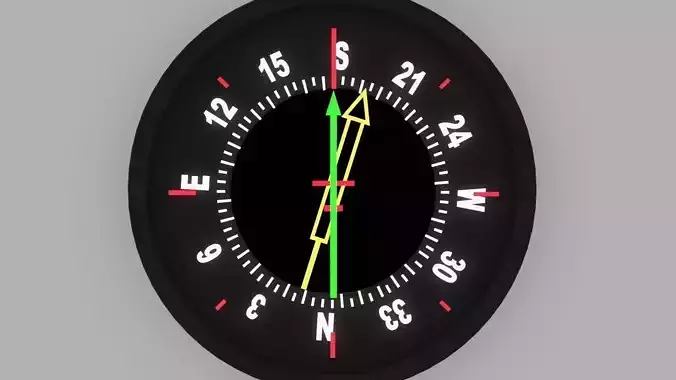1/14
A radio-magnetic indicator (RMI) is an alternate ADF display providing more information than a standard ADF. While the ADF shows relative angle of the transmitter with respect to the aircraft, an RMI display incorporates a compass card, actuated by the aircraft's compass system, and permits the operator to read the magnetic bearing to or from the transmitting station, without resorting to arithmetic.
Most RMI's incorporate two direction needles. Often one needle (the thicker, double-barred needle) is connected to an ADF and the other (generally thin or single-barred) is connected to a VOR. Some models allow the operator to select which needle is connected to each navigation radio. There is great variation between models, and the operator must take care that their selection displays information from the appropriate ADF and VOR.
This instrument display can replace a magnetic compass display in the instrument panel, but not necessarily the gyroscopic Heading Indicator. The Heading Indicator can be combined with information from navigation radios (primarily VOR/ILS) in a similar way, to create the Horizontal Situation Indicator. The HSI, along with the VOR system, has largely replaced use of the RMI, however the HSI's much higher cost keeps the older combination of an RMI and an Omni Bearing Indicator attractive to cost-conscious pilots.
REVIEWS & COMMENTS
accuracy, and usability.















